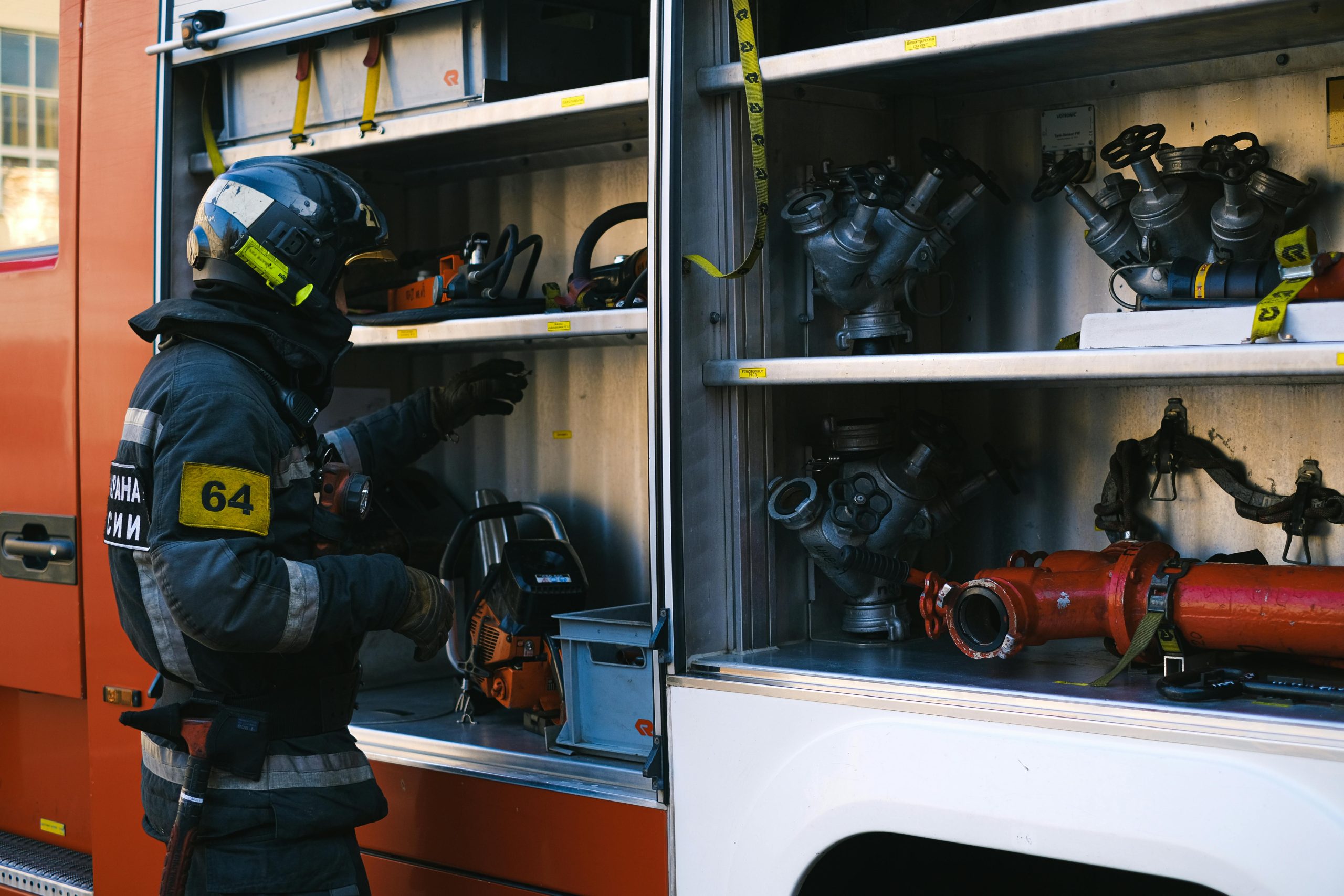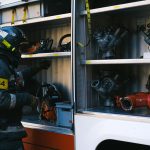Understanding fire risk assessments is essential to protect lives and property. This guide explains how to identify hazards, evaluate risks, and implement effective safety measures. Whether for legal compliance or peace of mind, conducting thorough assessments helps ensure your premises remain safe and prepared for emergencies. Discover practical steps and key responsibilities to navigate this vital safety process confidently and efficiently.
Understanding Fire Risk Assessments in Workplace Safety
Fire Safety Compliance emphasizes the necessity for responsible individuals to conduct and routinely review fire risk assessments. These evaluations identify potential hazards, such as faulty electrical equipment or combustible materials, and determine who might be at risk, including vulnerable groups like the elderly or disabled.
In parallel : How can UK organizations assess and improve their diversity and inclusion efforts?
Regular reviews ensure that safety measures remain effective amid changes, maintenance needs, or new regulatory requirements. The process encompasses steps like recording findings, creating emergency evacuation plans, offering staff training, and updating procedures as needed. Proper documentation plays a pivotal role in demonstrating compliance and facilitating swift response during incidents.
The assessment can be performed by the responsible person using comprehensive guides or by appointing a “competent person,” such as a qualified risk assessor. Local fire authorities may advise but do not typically carry out evaluations directly. Ensuring adherence to Fire Safety Compliance not only minimizes fire risks but helps avoid legal penalties, property damage, and potential loss of life.
Also to discover : Unlock revenue growth with effective coaching programs
For further guidance, downloadable fire risk assessment templates and checklists are accessible, aiding workplaces in maintaining up-to-date safety standards.
Step-by-Step Process of Conducting a Fire Risk Assessment
Identifying Potential Fire Hazards in Premises
Applying the SQuAD approach, fire hazard identification requires an initial walk-through to locate sources of ignition, such as electrical equipment, heating systems, and hot works. Carefully check storage areas, as combustible materials near these ignition sources increase commercial premises fire risk significantly. Proper separation and routine inspection form part of respected fire prevention strategies. Smoking and hot processes complicate workplace fire risk analysis designating safe zones and ensuring robust controls drastically cut likelihood of incidents.
Recognizing Who May Be at Risk
In your fire safety evaluation, consider every individual on-site. Employees, visitors, and especially vulnerable groups the elderly, children, or those with disabilities face unique threats. Night shift and transient staff are often overlooked in workplace fire risk analysis, but may be unaware of evacuation procedures. High-occupancy zones present complex fire safety risk factors, requiring monitored exit routes and clear fire safety documentation. Tailor the fire risk management plan based on occupancy type and turnover.
Evaluating and Reducing Fire Risks
Fire risk assessment steps next involve reviewing escape routes, emergency signage, and lighting for compliance. Faulty alarm systems or blocked routes elevate regulatory compliance for fire safety issues. Installing and maintaining comprehensive alarm and detection systems is non-negotiable. Fire risk control measures—like frequent drills and recorded checks—alongside a living fire safety documentation trail, help you meet fire safety legislation overview requirements and continually improve your response plan.
Documenting and Maintaining Fire Safety Measures
Recording Findings and Developing Emergency Plans
A robust fire risk management plan begins with diligent documentation. Precision dictates that every fire safety evaluation forms part of a written record, as mandated by regulatory compliance for fire safety. Assign fire safety responsibilities by clearly listing roles for evacuation management and routine checks. Developing clear emergency evacuation planning ensures each staff member knows the correct procedures and routes. Maintain checklists and written logs; they serve as both guides for daily actions and proof of compliance during a fire safety audit process. Consistent documentation also facilitates the regular review required by fire risk assessment checklist standards.
Staff Training and Regular Drills
Staff must be thoroughly aware of the fire risk management plan and fire safety responsibilities through ongoing fire risk assessment training courses. Periodic fire drills reinforce emergency evacuation planning and elevate the quality of the fire safety evaluation. Train designated fire wardens, assigning their names and duties in both physical and digital fire safety documentation. Such drills and training help organizations meet both legal requirements and best practices in fire prevention strategies.
Keeping Fire Safety Equipment in Check
Routine checks of fire alarms, extinguishers, and lighting are a central part of the fire risk management plan. Every test, service, or repair undergoes documented entry in fire safety inspection forms. Ensure that escape routes remain clear, and fire doors function properly, as detailed in the fire safety audit process. Documenting this work underpins regulatory compliance for fire safety and acts as a foundation for future evaluations.
Legal and Regulatory Framework for Fire Safety Compliance
Overview of Fire Safety Legislation and Standards
The Regulatory Reform (Fire Safety) Order 2005 serves as the fundamental framework for regulatory compliance for fire safety in England. This legislation requires that every employer or ‘responsible person’ conducts a fire safety evaluation to protect occupants and property. Fire safety responsibilities extend to maintaining safe environments, tailoring fire prevention strategies for different premises, and meeting exemptions or special conditions when necessary, especially in residential or healthcare settings.
Understanding Compliance Requirements
To achieve regulatory compliance for fire safety, an effective fire risk management plan must be implemented. This involves following a step-by-step fire risk assessment checklist:
- Identify fire hazards using fire hazard identification
- Evaluate risks and implement fire risk control measures
- Document findings thoroughly with appropriate fire safety documentation
- Conduct regular workplace fire risk analysis
- Cooperate with fire safety authorities during fire safety audit processes and ensure records are available for inspection
Resources and Support for Compliance
Regulatory compliance for fire safety is easier with the right tools. Fire risk assessment templates, fire safety inspection forms, and downloadable fire risk assessment checklist documents streamline the evaluation process. Fire risk assessment training courses and guidance enhance understanding of legal requirements. Technology, like fire risk assessment software tools, supports ongoing fire risk management plan updates and enables access to fire risk assessment case studies, strengthening workplace and commercial premises fire safety compliance.
Implementing Effective Fire Risk Control Measures
A structured fire safety evaluation starts with robust fire risk control measures. Using the SQuAD approach, first list the measures needed: proper alarms and extinguishers, secure and accessible escape routes, and fire-resistant construction materials. These steps make a direct impact by reducing hazards and improving emergency readiness.
Designing and Improving Fire Safety Infrastructure
Effective fire hazard identification guides the choice of fire alarms, sprinklers, and extinguishers. Precise placement, regular maintenance, and swift replacement of faulty equipment are basic requirements. Emergency evacuation planning relies on clear, unobstructed routes and exits that disabled occupants can use without delay. Introducing fire-resistant doors and compartmentation limits fire spread, supporting a safer environment and enhanced regulatory compliance for fire safety.
Promoting a Fire-Safe Environment Through Policies
Fire risk management plan implementation demands policies such as strict no-smoking rules and dedicated disposal protocols for waste. Ongoing fire safety awareness campaigns inform all staff and visitors about risks, and clearly defined procedures for hot works and electrical safety further bolster protections. This comprehensive policy approach aligns with legal requirements and fire safety legislation overview standards.
Continuous Monitoring and Improvement
Ongoing fire safety audit process steps, regular updating with a fire risk assessment checklist, and meaningful staff engagement ensure long-term improvement. Reviewing after each incident and adjusting the fire safety responsibilities matrix promote effective risk reduction. This methodical approach supports adherence to fire risk assessment training courses standards and maintains ongoing safety.
Resources and Tools for Fire Risk Assessment
Downloadable Templates and Checklists
A fire risk assessment template aids responsible persons in systematically addressing fire hazard identification and recording findings. Utilizing a template ensures that all critical steps in a fire risk assessment—such as evaluating fire risk, completing a full fire safety evaluation, and documenting outcomes—are never missed. Standard fire risk assessment template forms encompass lists for fire risk control measures, emergency evacuation planning, and compliance checkpoints. These checklists support consistency and regulatory compliance for fire safety across various commercial premises and residential buildings. Comprehensive fire safety inspection forms also facilitate the clear delegation of fire safety responsibilities, reducing errors during inspections.
Software and Digital Tools
Modern fire risk assessment software tools streamline how premises manage fire safety evaluation and updates. By adopting these platforms, organizations can integrate their fire risk management plan with workplace fire risk analysis systems and health and safety documentation. Digital tracking enhances visibility for team members overseeing fire risk control measures, making it simpler to record fire hazard identification practices and implement improvements. Automated reminders ensure fire risk assessment frequency requirements are met, reducing the likelihood of oversight.
Training and Support Courses
Ongoing training—via fire risk assessment training courses and practical workshops—ensures responsible staff understand fire risk assessment responsibilities explained in regulatory frameworks. These courses cover advanced fire risk management plan development, fire safety legislation overview, and fire risk control measures. Accredited training can be crucial for fire risk assessment job roles, ensuring staff maintain compliance and foster continuous safety standards in evolving workplaces.
BODY
Fire safety evaluation is structured around a methodical process designed to reduce fire risk in both workplaces and public buildings. Using the SQuAD approach, the first step is clear: identify fire hazards, such as ignition sources, combustible materials, and potential fuel chains. This fire hazard identification is foundational in every assessment template and informs all subsequent fire prevention strategies.
Next, ongoing fire risk assessment assesses which people or assets are exposed to hazards. Consider vulnerable groups, such as elderly individuals, children, or anyone with a disability. Practical guidance for fire safety responsibilities highlights that everyone in the premises, including staff and visitors, should be considered. Employers are legally required to complete regular fire risk assessments as a key part of regulatory compliance for fire safety under current legislation.
A robust fire risk management plan then evaluates risks thoroughly. This step integrates checks for safe emergency routes and robust evacuation planning, and checks that equipment maintenance schedules are up-to-date. All findings must be documented using a fire risk assessment checklist, incorporating fire risk control measures and referencing the fire safety risk assessment regulations.
This rigorous cycle, supported by fire safety documentation, ensures workplaces meet both regulatory and safety standards, minimizing commercial premises fire risk and reinforcing an effective safety culture. Regular reviews and updates finalize the process, supporting continuous fire prevention and legal adherence.











